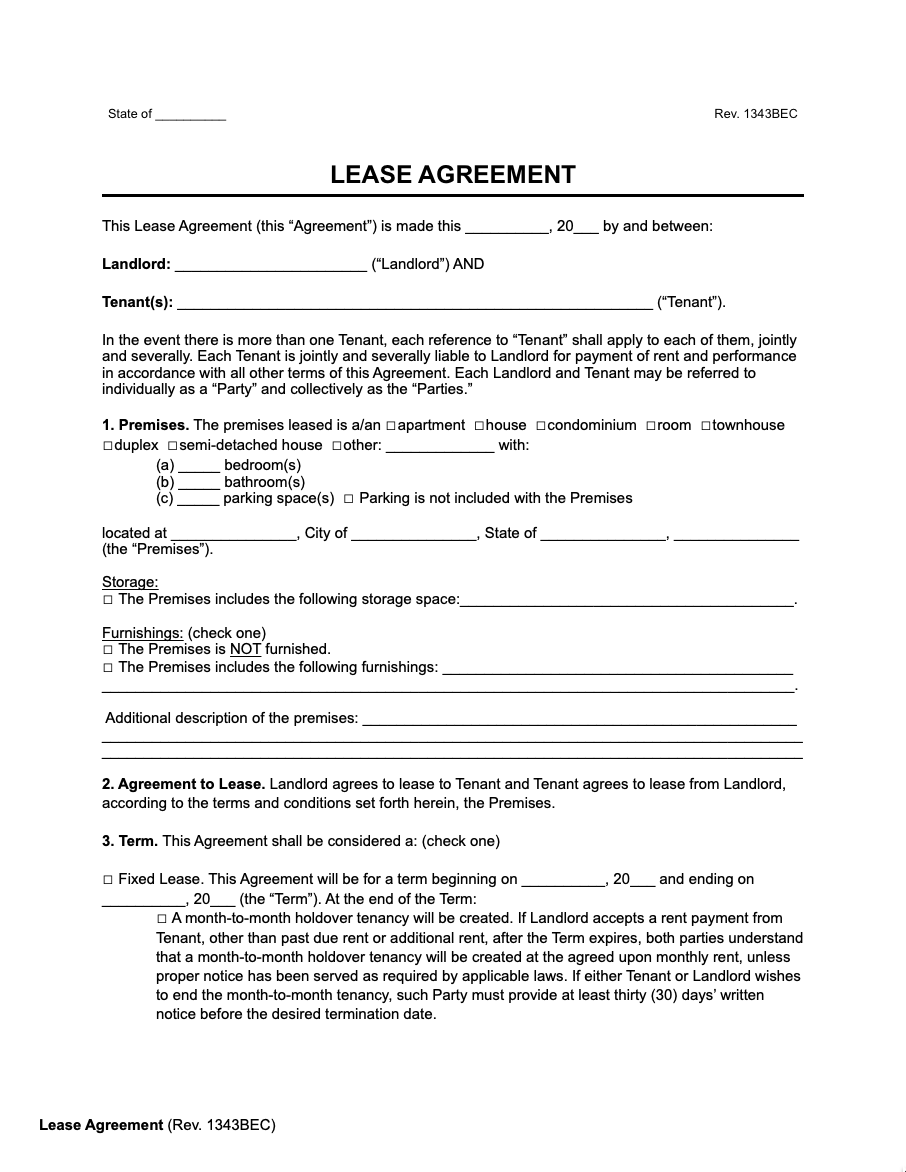When you move into a new property in the middle of the month, you may not want to pay an entire month’s rent. Instead, you may seek out another option: prorated rent.
However, there is often a lot of confusion over what prorated is and how to calculate it.
Here are the answers to your burning questions about prorating that you’ve been too embarrassed to ask.
What Is Prorated Rent?
Prorated rent is the partial rent that the tenant pays if he or she hasn’t stayed at the property for a full month.
This situation can occur if the tenant moves in mid-month and has to move out before the end of the month due to an eviction notice or some other reason.
Tenants might also pay prorated rent for their first month on the property if they move in after the first of the month.
Usually, the landlord will calculate how much is due for the number of days that the tenant stays at the property. This serves as a way to keep things fair between the landlord and tenant.
Why Prorate?
Despite the hassle, prorating is beneficial to both the landlord and the tenant.
Keeping things fair and aboveboard does wonders for your landlord-tenant relationship and will only help make the tenant’s stay at the property enjoyable.
Landlord perspective
As a landlord, it’s to your advantage to prorate rent.
Not only is securing a tenant easier if you show your potential new renter that you can be flexible with their moving schedule, but it also helps if you demonstrate that you’re not out to nickel and dime him or her.
Tenant perspective
As a tenant, prorating rent is the best way to ensure you’re not paying extra for what you’re getting. After all, most people wouldn’t want to be forced to pay rent for time they haven’t spent at the property.
Not to mention, requesting prorated rent can also be a good indicator to see if your landlord is only out to get as much money out of you as possible, while also serving as a litmus test for the rest of your relationship.
How to Calculate Prorated Rent
There are two commonly used methods to prorate rent manually: by the number of days in a year, and by number of days in a month.
However, if you’re unsure of your math skills, you can also check out online prorate rent calculators for a quick and easy way to determine how much to charge.
Using the Number of Days In a Year
Often cited as the most accurate way to calculate prorated rent, this method asks you to first multiply the monthly rent amount by 12 to get the yearly rent. Then, divide this yearly rent by 365 to get the daily rent.
Finally, multiply this daily rent by the number of days that the tenant is paying rent for to get the prorated rent amount.
This method is best used for leases that are at least a year long.
Let’s say your monthly rent is $3,000 USD/month and you’re moving in on the 8th of March.
Prorate rent using yearly calculation:
- Step 1: $3,000 x 12 months = $36,000
- Step 2: $36,000/365 days = $98.63
- Final step: $98.63 x 8 days = $789.04
Using the Number of Days In a Month
Calculate prorated rent using the number of days in a month for a method that’s easier to wrap your mind around.
Using this method, start with the monthly rent amount and divide it by the number of days in the month. Then, multiply this amount by the number of days the tenant is paying rent to get the prorated rent amount.
This method is best used for lease terms shorter than a year.
For easier comparison, let’s continue with the example where your monthly rent is $3,000 USD/month and you’re moving in on the 8th of March.
Prorate Rent Using Monthly Calculation:
- Step 1: $3,000/31 days of March = $96.77
- Final step: $96.77 x 8 days = $774.19
Using a Prorated Rent Calculator
If calculating the prorated rent by hand is too much to handle, have these online prorate rent calculators do the math for you:
Using the Number of Days in an Average Month
Another approach to prorating rent is to use the average number of days in a month, which is generally considered to be 30.42 days. This method strikes a balance between simplicity and accuracy, as it averages out the lengths of all months in a year.
Step 1 – Calculate the Daily Rent Using the Average Month Length:
- Start by dividing the monthly rent by 30.42 to get the average daily rent.
- Example: If your rent is $3,000 per month: $3,000 / 30.42 = $98.59
Step 2 – Multiply by the Number of Days the Tenant Is Paying For:
- Finally, multiply the average daily rent by the number of days the tenant is occupying the property during that month.
- Example: If the tenant moves in on the 8th of March: $98.59 x 8 days = $788.72
Using a Flat 30-day Calculation
For a straightforward and easy-to-calculate method, you can use a flat 30-day month regardless of the actual number of days in the month. This method is simple but may be less accurate, especially for shorter or longer months.
Step 1 – Determine the Daily Rent Based on a 30-Day Month:
- Divide the monthly rent by 30 to get the daily rent.
- Example: If your rent is $3,000 per month: $3,000 / 30 = $100
Step 2 – Multiply by the Number of Days the Tenant Will Occupy the Property:
- Multiply the daily rent by the number of days the tenant will be in the unit.
- Example: If the tenant moves in on the 8th of March: $100 x 8 days = $800
When Do Landlords Use Prorated Rent?
Landlords are not typically required to offer prorated rent, but they may offer it to sweeten the deal so that a tenant can move in and occupy the unit as soon as possible.
Some instances in which landlords use prorated rent include:
- Tenants moving in mid-month or at any time other than the start of the month.
- Allowing tenants to break the lease early for necessary, legal reasons.
- Tenants needing to stay a few days past their lease end date as they prepare to move out.
Many tenants see prorated rent as a courtesy and a show of good faith by the landlord. It can also give your property a competitive edge.
If you are in a hurry to rent the space or there is a tenant you like who cannot move in on the first of the month, prorated rent can help you and the tenant get what you need.
When Can Renters Ask For Prorated Rent?
If you’re the tenant, you should request proration when you move into a new property and it’s not the beginning of the month, or if you’re moving out and it’s not yet the end of the month.
If proration is something you want, talk to your landlord about writing in a clause for this when drafting the lease agreement.
Or, if you hadn’t thought about requesting prorated rent with your original lease agreement, consider adding a provision regarding this using a lease amendment.
How to Request Prorated Rent
Once you’re familiar with the basics of prorated rent, you can confidently move forward with your request to your landlord. Here’s how to do it:
- Review Your Lease Agreement: Start by examining your lease to determine if there is already a provision for prorated rent. If so, note the terms, including how the prorated amount is calculated and when it applies.
- Research State and Local Laws: If your lease does not mention prorated rent, or if you want additional support for your request, research your state and local laws. Understanding your rights under the law can strengthen your position.
- Calculate the Prorated Rent: Use one of the common methods for calculating prorated rent—by the number of days in a year, month, average month, or a flat 30-day rate. Be ready to present this calculation to your landlord to show that your request is reasonable and based on a fair method.
-
Draft a Formal Request: Write a polite and professional letter or email to your landlord requesting prorated rent. In your request, include:
- Your move-in or move-out date.
- The method you used to calculate the prorated amount.
- Any legal or lease agreement support for your request.
- Negotiate if Necessary: If your landlord is hesitant or disagrees with your calculation, be prepared to discuss the terms. Offer to recalculate using a method they prefer, or reference legal statutes that support your request.
- Document Everything: Keep a written record of all communications regarding your request for prorated rent. This documentation can be invaluable if any disputes arise later.
Request Example:
Dear [Landlord’s Name],
I hope this message finds you well. I am writing to request prorated rent for the month of [Month]. As I will be moving in on [Move-in Date], I would like to pay only for the days I will be occupying the property.
Based on our lease agreement and [State] law, I have calculated the prorated rent amount using the [chosen method] method. The total comes to $[Prorated Amount] for [Number of Days] days of occupancy.
I appreciate your consideration and look forward to your response.
Sincerely, [Your Name]
Understanding the Legality of Prorated Rent
Before requesting prorated rent, it’s important to understand that this practice is legally recognized in most jurisdictions across the United States. The concept is grounded in fairness, ensuring that tenants are only charged for the actual time they occupy a rental property.
State and Local Laws
While prorated rent is generally accepted, the specifics can vary depending on state and local landlord-tenant laws. Some states have clear statutes that outline how and when prorated rent can be applied.
In some areas, the laws may provide more detailed guidelines on how the prorated amount should be calculated, which can support your request.
Lease Agreements
The lease agreement between you and your landlord is another critical document governing the legality and application of prorated rent. Typically, a well-drafted lease will include a clause that specifies whether prorated rent is applicable, how it is calculated, and under what circumstances it will be enforced.
Enforcement and Fairness
In cases where the lease does not explicitly address prorated rent or where local laws are silent on the issue, courts often apply principles of fairness and equity. The general legal perspective is that tenants should only be responsible for rent during the time they actually occupy the property. Thus, if a dispute arises, a tenant’s request for prorated rent is likely to be viewed as reasonable and enforceable.
Summary
Life doesn’t always follow an exact plan. If you’re moving into a new place or have a pressing need to break a lease and move out, it’s common for your lease term to not match up precisely with when a month begins or ends.
Although the term might sound overly complicated at first glance, don’t feel intimidated by the idea of prorated rent.
Once you sit down with the landlord and work out the math, you’ll arrive at a financially fair solution that will satisfy both of you.


